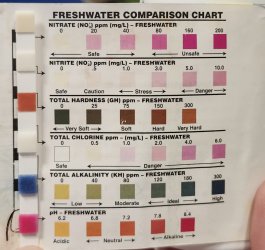I hope this isn't what did them in...I emptied the water they came with into a nice size cup, and floated said cup in their tank (to acclimate temperatures). I added some of the tank water to their cup, waited a couple of minutes, then did the same thing again. From there I was able to net them out and put them in the tank.
I had them separated off from my betta so that he wouldn't bother them, and their little "enclosure" (an old livebearer trap with the separater removed) had pre-soaked oak leaves, Java moss enveloped in hair algae, and some guppy grass in it.
All were feeding well as of 11pm last night (no food added, just let them graze on the leaves and algae), but as of 8am this morning almost all were dead. I'm a little scared that it had something to do with some Java moss I treated in a separate cup yesterday with 3% hydrogen peroxide to help clean off the algae...while the hydrogen peroxide was never directly added to the tank, my worry is that some of it got in when I put a clump of the then treated moss back in and it harmed the shrimp

However, the remaining shrimp seems to be doing okay, so I'm not entirely sure....
EDIT: Nevermind, last night I found half of the remaining shrimp...in other words, there goes $30





